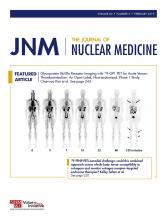Abstract
Although absent in most adult tissues, hexokinase 2 (HK2) is expressed in most tumors and contributes to increased glucose consumption and to in vivo tumor 18F-FDG PET signaling. Methods: Both HK2 knockdown and knockout approaches were used to investigate the role of HK2 in cancer cell proliferation, in vivo xenograft tumor progression, and 18F-FDG tumor accumulation. BioProfiler Glycolysis analysis monitored cell culture glucose consumption and lactate production; 18F-FDG PET/CT monitored in vivo tumor glucose accumulation. Cancer Cell Line Encyclopedia data were analyzed for hexokinase 1 (HK1) and HK2 expression. Results: Neither cell proliferation in culture nor xenograft tumor progression are inhibited by HK2 knockdown or knockout in cancer cells that express HK1 and HK2. However, cancer subsets from a variety of tissues of origin express only HK2, but not HK1. In contrast to HK1-positive/HK2-positive (HK1+HK2+) cancers, HK2 knockdown in HK1-negative (HK1−) HK2+ cancer cells results in inhibition of cell proliferation, colony formation, and xenograft tumor progression. Moreover, HK1-knockout (HK1KO)HK2+ cancer cells are susceptible to HK2 inhibition, in contrast to their isogenic HK1+HK2+ parental cells. Conclusion: HK1 and HK2 expression are redundant in tumors; either can provide sufficient aerobic glycolysis for tumor growth, despite a reduction in 18F-FDG PET signal. Therapeutic HK2 inhibition is likely to be restricted to HK1−HK2+ tumor subsets, and stratification of tumors that express HK2, but not HK1, should identify tumors treatable with emerging HK2 specific inhibitors.
Footnotes
Guest Editor: Todd Peterson, Vanderbilt University
Published online Jun. 7, 2018.
- © 2019 by the Society of Nuclear Medicine and Molecular Imaging.







